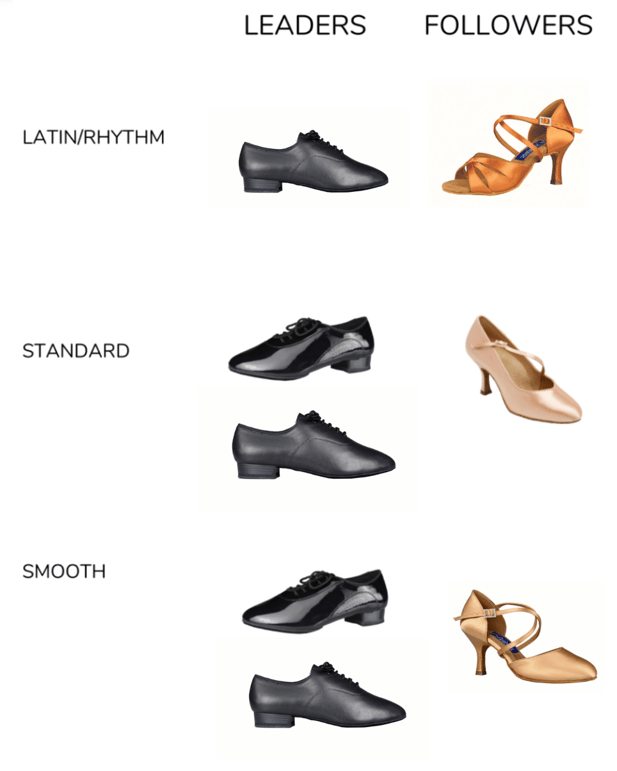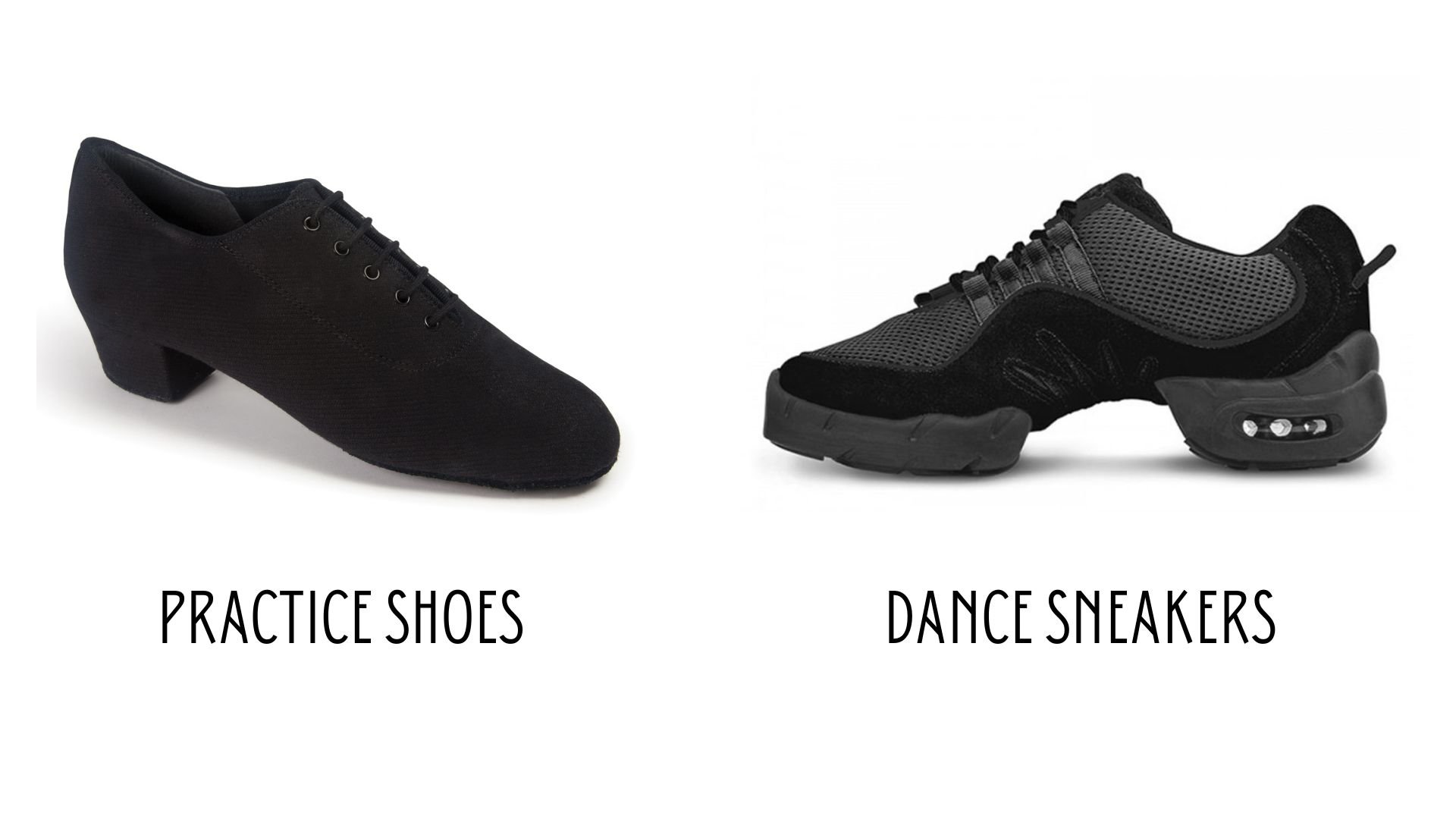Dance shoes are distinct due to their specialized design and materials. They offer enhanced flexibility, support, and grip.
Dance shoes are crafted to meet the unique demands of various dance styles. They feature split soles for added flexibility and suede or leather soles for optimal traction. These shoes also provide superior arch support and cushioning, reducing the risk of injury.
Lightweight construction allows for effortless movement and agility. Proper dance shoes improve performance, comfort, and safety. They are essential for both amateur and professional dancers. Investing in quality dance shoes can significantly enhance your dancing experience. Make sure to choose the right pair for your specific dance style to maximize benefits.

Credit: blog.dancevision.com
Materials Used
Dance shoes play a crucial role in a dancer's performance. The materials used in their construction significantly impact comfort, flexibility, and durability. Let’s explore the different materials commonly used in dance shoes.
Leather
Leather is a popular material for dance shoes due to its durability. It molds to the shape of your foot, offering a custom fit. Leather shoes are breathable, allowing air to circulate and keep feet dry. They also provide good traction, helping dancers maintain balance and stability on the dance floor.
| Pros | Cons |
|---|---|
| Durable | Can be expensive |
| Breathable | Requires regular maintenance |
| Custom fit | May take time to break in |
Suede
Suede is another favored material, particularly for the soles of dance shoes. It offers an excellent balance of grip and slide, making it ideal for spins and turns. Suede shoes provide a soft, luxurious feel and are typically lighter than leather. They are perfect for indoor dance environments.
- Balanced grip and slide
- Soft and lightweight
- Best for indoor use

Synthetic Options
Synthetic options offer a variety of benefits, including affordability and easy maintenance. These materials can mimic the look and feel of natural materials like leather and suede. They are often more resistant to wear and tear. Synthetic dance shoes are also available in a wide range of colors and styles, catering to different tastes and preferences.
- Affordable
- Easy to maintain
- Wide range of styles
- Durable
Choosing the right material for your dance shoes can significantly enhance your performance and comfort. Whether you prefer leather, suede, or synthetic options, each material offers unique benefits to suit different dancing needs.
Sole Design
When it comes to dance shoes, the sole design plays a crucial role. Different sole types cater to various dance styles and skill levels. The right sole design can enhance performance, provide comfort, and ensure safety. Let’s explore the different types of sole designs in dance shoes.
Split Sole
The split sole design features separate sections for the heel and toe. This design allows for greater flexibility and movement. Dancers can point and flex their feet with ease. It’s a popular choice for contemporary and jazz dancers.
| Advantages | Disadvantages |
|---|---|
| Enhanced flexibility | Less support |
| Better foot articulation | Not ideal for beginners |
Full Sole
A full sole covers the entire bottom of the shoe. It provides more support and stability. Ideal for beginners, it helps develop strength in the feet. Ballet shoes often feature a full sole design.
- Better support
- Increased stability
- Ideal for beginners
Flexibility
Flexibility in dance shoes is essential for optimal performance. Split soles offer maximum flexibility. Full soles offer more support but less flexibility. Choose based on your dance style and skill level.
- Consider your dance style
- Evaluate your skill level
- Try on different types
Heel Types
Choosing the right heel type for your dance shoes is crucial. The heel affects balance, movement, and comfort. Let's dive into different heel types and see how they vary.
Flat Heels
Flat heels offer excellent stability. They are perfect for beginners. These heels are common in ballroom and salsa dance shoes.
Benefits of flat heels:
- Great for balance
- Reduced risk of injury
- Comfortable for long dance sessions
Table showing examples of dance styles with flat heels:
| Dance Style | Flat Heel Type |
|---|---|
| Ballroom | Flat |
| Salsa | Flat |
Low Heels
Low heels are a popular choice for many dancers. They provide a slight lift. This type is ideal for Latin and swing dances.
Advantages of low heels:
- Better posture
- Enhanced footwork precision
- Increased ankle support
Table listing dance styles with low heels:
| Dance Style | Low Heel Type |
|---|---|
| Latin | Low |
| Swing | Low |

High Heels
High heels add elegance and flair to dance. They are often used in tango and salsa.
Pros of high heels:
- Enhanced leg line
- Better hip movement
- Stylish appearance
Table with high heel dance styles:
| Dance Style | High Heel Type |
|---|---|
| Tango | High |
| Salsa | High |

Credit: arthurmurrayhornsby.com.au
Fit And Comfort
Dance shoes are unique. They offer a special fit and comfort. These shoes allow dancers to move with ease. Let's explore the key aspects that set them apart.
Arch Support
Dance shoes provide strong arch support. This helps maintain balance. Arch support prevents foot strain during long performances. It is crucial for dancers. A well-supported arch reduces the risk of injury. This allows dancers to perform better.
Padding
Padding in dance shoes offers extra comfort. It cushions the feet from impact. Padded insoles absorb shocks. This is essential for jumps and quick movements. The right padding prevents blisters and sores. It ensures a comfortable experience.
Breathability
Breathability is key in dance shoes. Breathable materials keep feet cool. They reduce sweat and moisture. This prevents bad odors and infections. Mesh panels or perforations are common. These features enhance airflow. Breathable shoes keep feet fresh and dry.
Traction And Grip
Dance shoes are unique due to their traction and grip. These features ensure dancers move confidently and securely. They help prevent slips and falls, enabling smooth and controlled movements.
Indoor Use
Dance shoes designed for indoor use have special soles. The soles are often made from suede or soft leather. These materials provide the perfect balance of slip and grip. They allow dancers to glide across the floor effortlessly.
Indoor dance shoes are ideal for studios and stages. They need surfaces that are clean and smooth. Suede soles can wear out on rough surfaces. They need regular maintenance to stay effective.
Outdoor Use
Outdoor dance shoes are built differently. They have more durable soles. Rubber or hard leather are common materials. These soles offer better protection and grip on rough surfaces. They withstand dirt, moisture, and uneven grounds.
Outdoor dance shoes allow dancers to perform outside comfortably. They prevent slips and falls on unpredictable surfaces. This ensures safety while maintaining flexibility and control.
Surface Adaptability
Some dance shoes are versatile. They adapt to various surfaces. These shoes have hybrid soles. They combine materials like suede and rubber. This design provides flexibility for both indoor and outdoor use.
Hybrid soles offer both grip and glide. They are perfect for dancers who perform in different settings. These shoes ensure optimal performance and safety regardless of the surface.
Aesthetic Appeal
Dance shoes are not just about function. Their aesthetic appeal sets them apart. They are designed to look good, making every dancer feel special.
Color Options
Dance shoes come in a rainbow of colors. From classic black to vibrant red, there is a shade for everyone. Colors can match your costume or reflect your personality.
| Color | Occasion |
|---|---|
| Black | Formal Performances |
| Red | Latin Dance |
| Gold | Competitions |
Style Variations
Dance shoes come in many styles. Heels, flats, and sneakers each serve different purposes. Heels add elegance, flats offer comfort, and sneakers provide support.
- Heels: Ideal for ballroom and salsa dancing.
- Flats: Perfect for ballet and jazz.
- Sneakers: Great for hip-hop and street dance.
Customization
Customization makes dance shoes unique. Dancers can choose materials, colors, and embellishments. Personalized shoes boost confidence and performance.
- Choose your favorite material: leather, satin, or suede.
- Select embellishments: rhinestones, lace, or embroidery.
- Pick your perfect color: match your outfit or stand out.
Frequently Asked Questions
What Is The Difference Between Dancing Shoes And Normal Shoes?
Dancing shoes have specialized soles for better grip and flexibility. Normal shoes lack this feature. Dancing shoes are lighter and provide more support.
What Are The Characteristics Of Dancing Shoes?
Dancing shoes offer flexibility, support, and comfort. They feature non-slip soles and lightweight materials. Proper fit ensures optimal performance and reduces injury risk.
Can You Wear Dance Shoes As Everyday Shoes?
Dance shoes are designed for dance floors and specific movements. They lack the support and durability needed for everyday wear. Using them daily can lead to discomfort and quicker wear and tear. Opt for regular shoes for daily activities to ensure comfort and longevity.
Are Dancing Shoes More Comfortable?
Yes, dancing shoes are often more comfortable. They offer better support, flexibility, and cushioning designed for dance movements.
What Are Dance Shoes Made Of?
Dance shoes are typically made of lightweight materials like leather, suede, or canvas to allow for flexibility and ease of movement.
Conclusion
Dance shoes are essential for performance and safety. They provide the right support, flexibility, and grip. These specialized features make them unique. Investing in quality dance shoes enhances your dancing experience. Choose the right pair to improve your skills and protect your feet.
Happy dancing!
